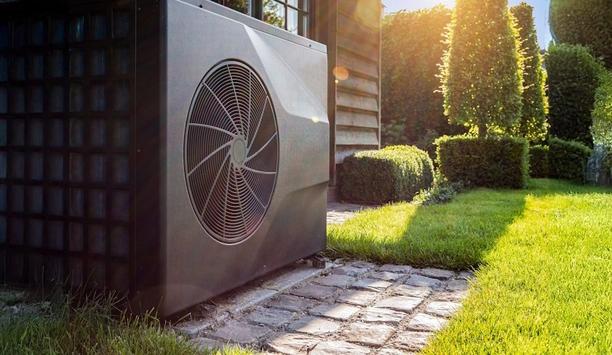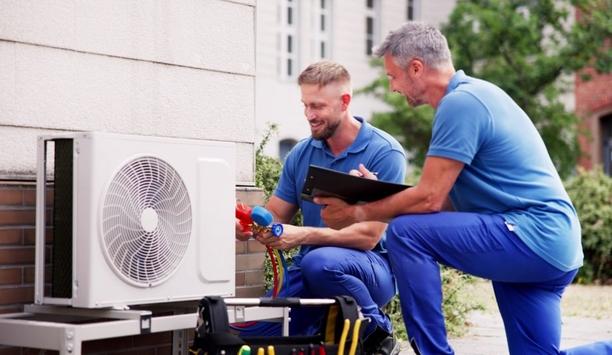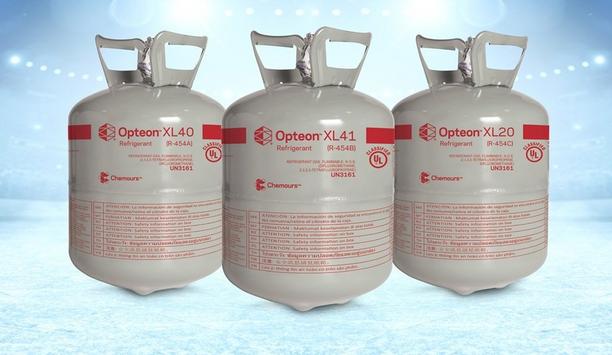From temperate climates that reach mid-90 F in June and mild winters allowing people to be outdoors without jackets to the “May flowers” that bloom in early March, it’s evident that society is experiencing World Refrigeration Day’s 2024 theme: “Temperature matters.” In addition to driving climate change, global warming is driving changes in how people live and how industries adapt and innovate to support new dynamics. This is especially true for the HVACR Industry.
Over the past several years, contractors have been busy installing and servicing cooling systems in climate zones that historically haven’t needed them. There’s a major focus on achieving more energy efficiency and lower water consumption in cooling the world’s escalating number of data centers.
Impact on HVACR Industry
There’s also increased demand to conserve water in cooling towers and/or adiabatic condensers and for elevated indoor environmental quality (IEQ) to improve health and productivity.
A few examples show how rising global temperatures are impacting the HVACR industry
These few examples demonstrate how rising global temperatures are impacting the HVACR industry. Sharing a huge part of the spotlight of industry solutions are refrigerants, which now need to work harder than ever to keep people comfortable and foods, beverages, and pharmaceuticals at proper temperatures. And they must do so without contributing to global warming and other environmental concerns.
Refrigerant priority #1: lower GWP
Assessing refrigerants for their ability to address climate change concerns starts with their global warming potential (GWP). That’s why attention has turned to A2Ls, which offer significantly lower GWP than legacy refrigerants. The three “big players” in the A2L arena—R-454A, R-454B, and R-454C—are now being selected for new-generation equipment solutions in various HVACR applications. A look at GWP reduction in a sampling of these applications tells the story:
- R-454A and R-454C can provide a 94% to 96% reduction in GWP as an alternative for R-404A, while offering similar performance
- Applications that historically would use a new R-410A unit can transition to R-454B, resulting in a 77% reduction in GWP.
The industry is also choosing HFO-1234yf, an A2L currently used in air conditioners in 95 million vehicles on U.S. roads. HFO-1234yf has an AR4 GWP of 4 and is also used as a blend component in Chemours A1 and A2L products. Although A2Ls are for new equipment only, lower-GWP A1 refrigerant solutions can help in retrofits. For most applications using a higher-GWP HFC in an existing system, there’s likely a lower-GWP HFC/HFO blend for retrofit applications
Other refrigerant priorities
Of course, the value of a refrigerant is based on more than just low GWP
Of course, the value of a refrigerant is based on more than just low GWP. The true innovation in refrigerant development lies in striking the optimal balance between environmental impact and performance for a diversity of applications. For example, after developing what are now considered three major players in the future of refrigerants—Chemours Opteon™ XL40 (R-454A), Opteon™ XL41 (R-454B), and Opteon™ XL20 (R-454C)—our chemists remain in the labs and work with pioneering industry partners to lower GWP even more, without compromising other properties. It’s important to consider how well a refrigerant addresses several key factors:
- Low GWP and zero ozone depletion potential (ODP)
- Reduced energy consumption
- Circularity—the ability to be recovered, recycled, and reclaimed
- Lower operating costs over the lifetime of equipment
- Safety—for everyone from technicians to end users
- Overall performance—measured by capacity, reliability, and efficiency
- Can be serviced by a large existing workforce of trained technicians
- Responsible manufacturing focused on reducing carbon emissions
- Availability and supply chain strength
A2L refrigerants have been designed with these factors in mind, raising the bar in terms of performance and support for environmental priorities.
Addressing climate zone challenges
In addition to solutions designed for today’s many residential, commercial, and industrial cooling and refrigeration applications, the industry needs a full toolbox of systems, components, and refrigerants to meet—in a highly efficient manner—the challenges of cooling and heating in various climate zones.
These range from Zone 1, which is very hot, humid, and dry, to the subarctic Zone 8
ASHRAE divides the U.S. into eight major climate zones. These range from Zone 1, which is very hot, humid, and dry, to the subarctic Zone 8. In between these two extremes, we find various levels of heat/cold, humidity, and dryness. These climate zones provide system engineers with guidance for choosing the best designs—including refrigerant selection—so that each zone can be equipped with the appropriate system, optimized for year-round capacity, efficiency, reliability, and more.
New-generation heat pumps
For example, the high heat and humidity of a tropical climate put heavy demand on cooling equipment—from air conditioners to refrigeration systems. These cooling systems are likely to run most of the year, so choosing a highly energy-efficient option is paramount. By contrast, we have zones with overall colder ambient temperatures.
 |
| Heat pumps must be properly sized to ensure occupant comfort. |
Cooling systems in these climates have limited use during the year, but they must perform reliably when needed. In climates where heating buildings take priority over cooling them, we’re finding a significant transition from traditional AC-only units to new-generation heat pumps. Heat pumps must be properly sized to ensure occupant comfort and keep the heat pump from “struggling” to control humidity when operated in AC mode.
Choosing refrigerant solutions
There is no question the world’s temperature is on the rise. According to the National Oceanic and Atmospheric Administration, since 1982, the rate of the Earth’s warming has risen approximately 0.36 F (0.20°C) per decade—more than three times the average rate of all previous decades measured. The 10 warmest years on record all occurred in the past decade. And 2023 was the warmest year on record for North America, South America, and Africa, as well as the second warmest for Europe.
As climate change continues to warm up winters and heat up summers, refrigerants will play an increasingly important role in “cooling down” people and products and helping to reduce the impact that industry and society have on “heating up” the planet. Everyone can do their part by understanding that temperature matters, then choosing refrigerant solutions that have lower GWP, support other environmental needs, and offer the right combination of performance attributes for a given climate zone.





















